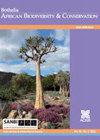做还是不做保护区:一个反常的政治威胁
IF 0.5
4区 生物学
Q4 PLANT SCIENCES
引用次数: 1
摘要
背景:2021年1月15日,南非环境执行委员会(MEC)的一名成员修改了马博拉保护环境(MPE)的边界,以消除在该保护区开采煤炭的法律障碍。这一决定是在MPE被宣布为保护区和一系列在宪法法院结束的法庭案件之后做出的。目的:本文的目的是:(1)评估MEC的决定对南非保护区的潜在影响;(2)就其保护保护区的承诺而言,推测对南非声誉可能产生的影响;(3)找出2003年《国家环境管理:保护区法》(NEMPAA)中可能存在的弱点;(4)提出加强该法案的建议,以减少保护区对武断和偏见决策的脆弱性。方法:本研究包括对NEMPAA和省公报中宣布和实施MEC决定的通知,以及导致该通知发布前后的各种高等法院判决的评估。结论:MEC的决定突出了保护区的脆弱性和保护生物多样性的重要性,特别是在狭隘或党派目标和既得利益有限(至少在中长期)公共利益的背景下。结论是,NEMPAA中的自由裁量权条款可能需要修改,以限制或完善政治家可能适用的自由裁量权。本文章由计算机程序翻译,如有差异,请以英文原文为准。
To be or not to be a protected area: A perverse political threat
Background: On 15 January 2021, a South African Member of the Executive Committee (MEC) for the Environment amended the Mabola Protected Environment’s (MPE) boundaries to remove legal impediments preventing coal mining in this protected area. This decision came in the wake of the MPE being declared a protected area and a series of court cases ending at the Constitutional Court.Objective: The objectives of this paper were: (1) evaluate the potential consequences of the MEC’s decision for South African protected areas; (2) speculate on the possible impact on South Africa’s reputation in terms of its commitment to safeguarding its protected areas; (3) identify possible weaknesses in the National Environmental Management: Protected Areas Act 57 of 2003 (NEMPAA); and (4) make recommendations to strengthen this Act so that it can reduce the vulnerability of protected areas to arbitrary and prejudicial decision-making.Methods: This study involved an evaluation of NEMPAA and the notice in the Provincial Gazette declaring and giving effect to the MEC’s decision, and of the various High Court judgments leading up to and following the publication of this notice.Conclusion: The decision by the MEC highlights the vulnerability of protected areas and the importance of the conservation of biodiversity, particularly in a context of parochial or partisan objectives and profit-vested interests that are of alimited (at least in the medium- to long-term) public benefit. It is concluded that the discretionary clauses in NEMPAA may need to be amended to limit or refine the discretion politicians may apply.
求助全文
通过发布文献求助,成功后即可免费获取论文全文。
去求助
来源期刊

Bothalia
生物-植物科学
CiteScore
1.70
自引率
0.00%
发文量
12
期刊介绍:
Bothalia: African Biodiversity & Conservation is published by AOSIS for the South African National Biodiversity Institute (SANBI) and aims to disseminate knowledge, information and innovative approaches that promote and enhance the wise use and management of biodiversity in order to sustain the systems and species that support and benefit the people of Africa.
The journal was previously published as Bothalia, and had served the South African botanical community since 1921. However the expanded mandate of SANBI necessitated a broader scope for the journal, and in 2014, the subtitle, African Biodiversity & Conservation was added to reflect this change.
 求助内容:
求助内容: 应助结果提醒方式:
应助结果提醒方式:


